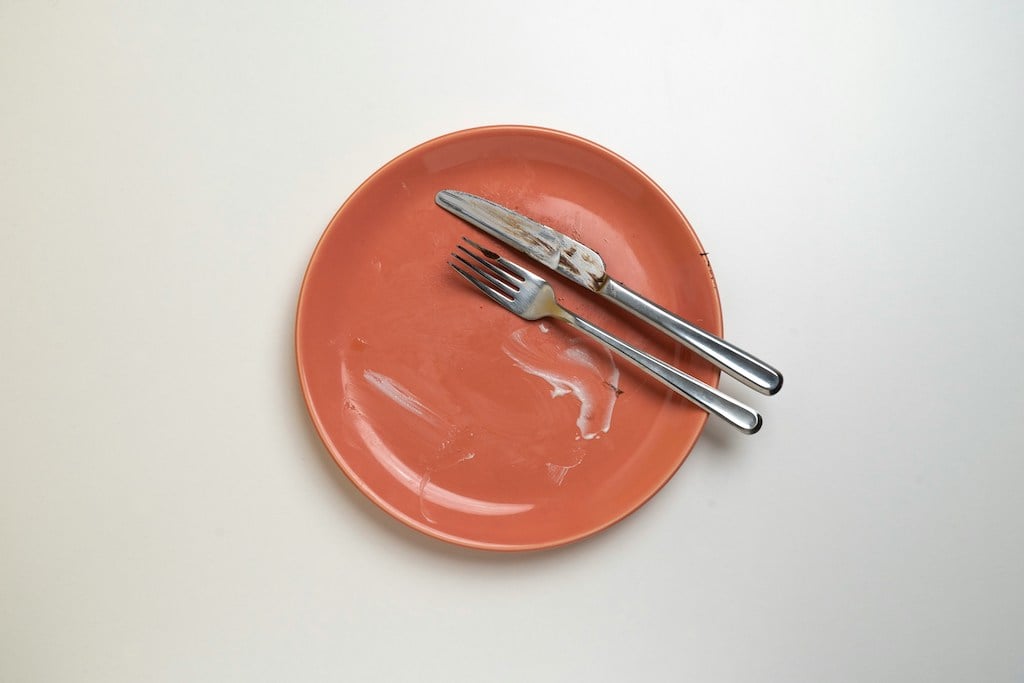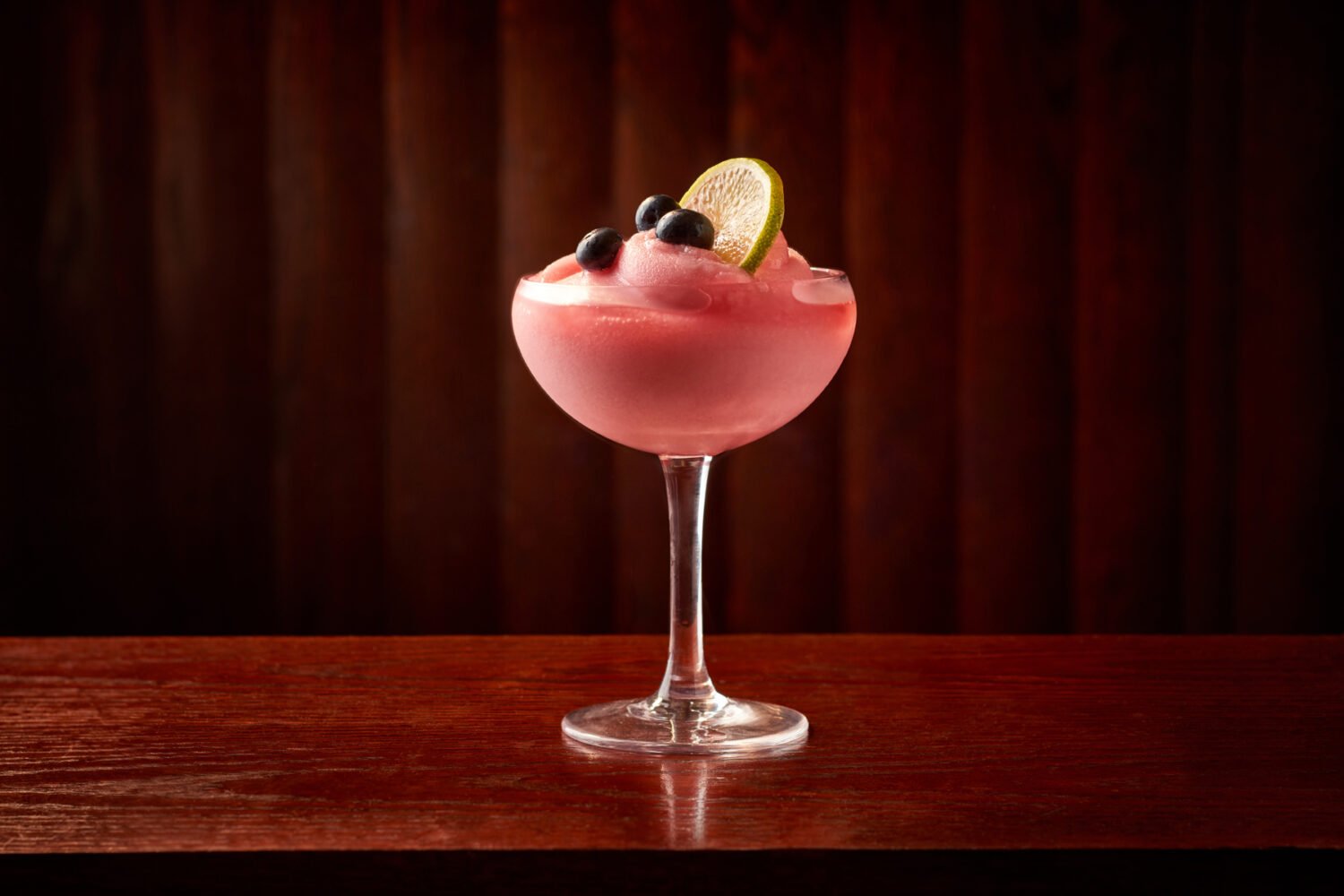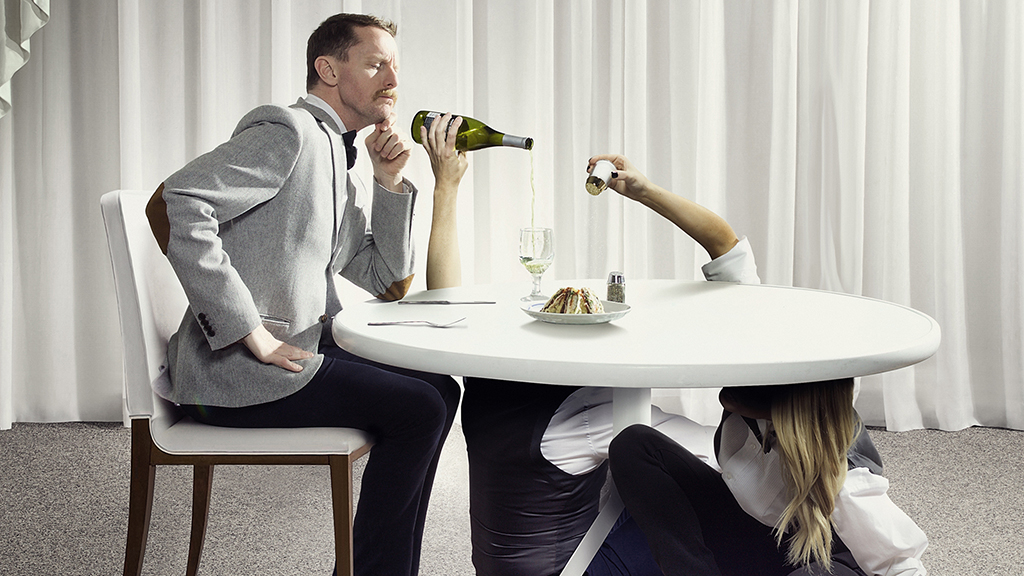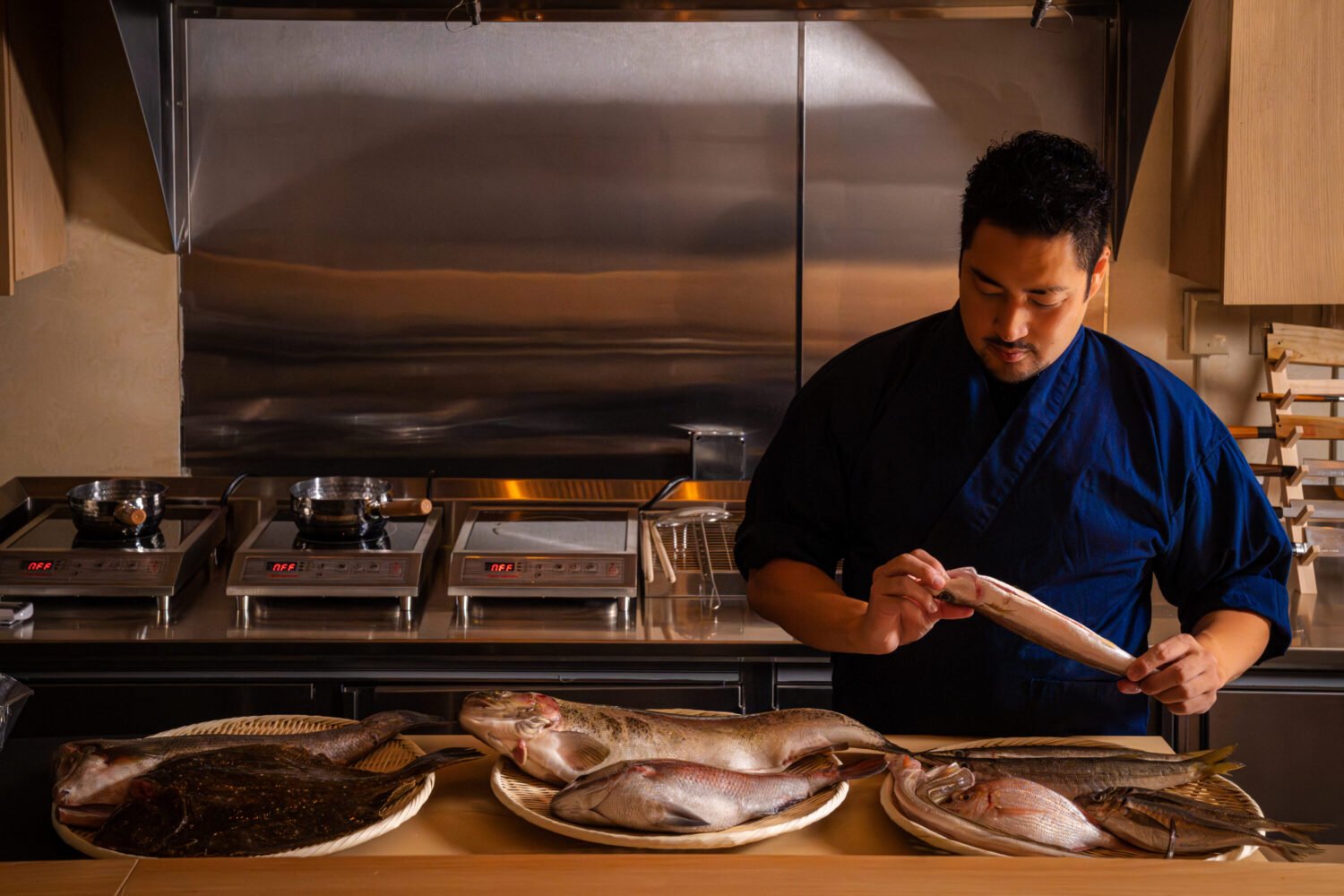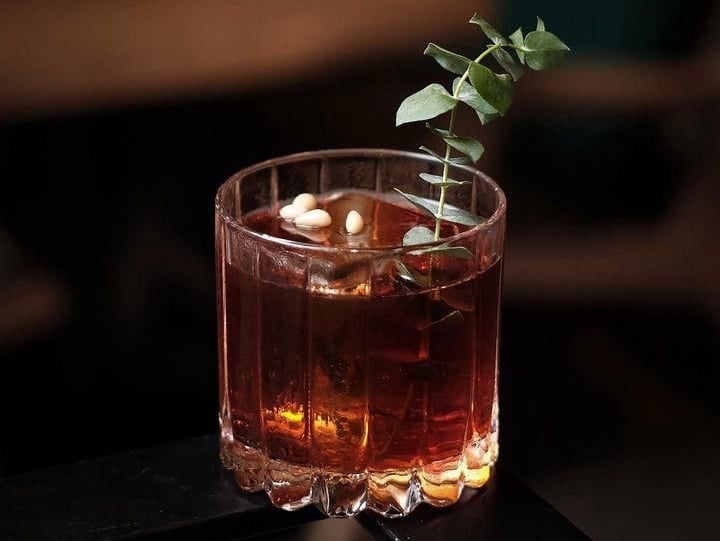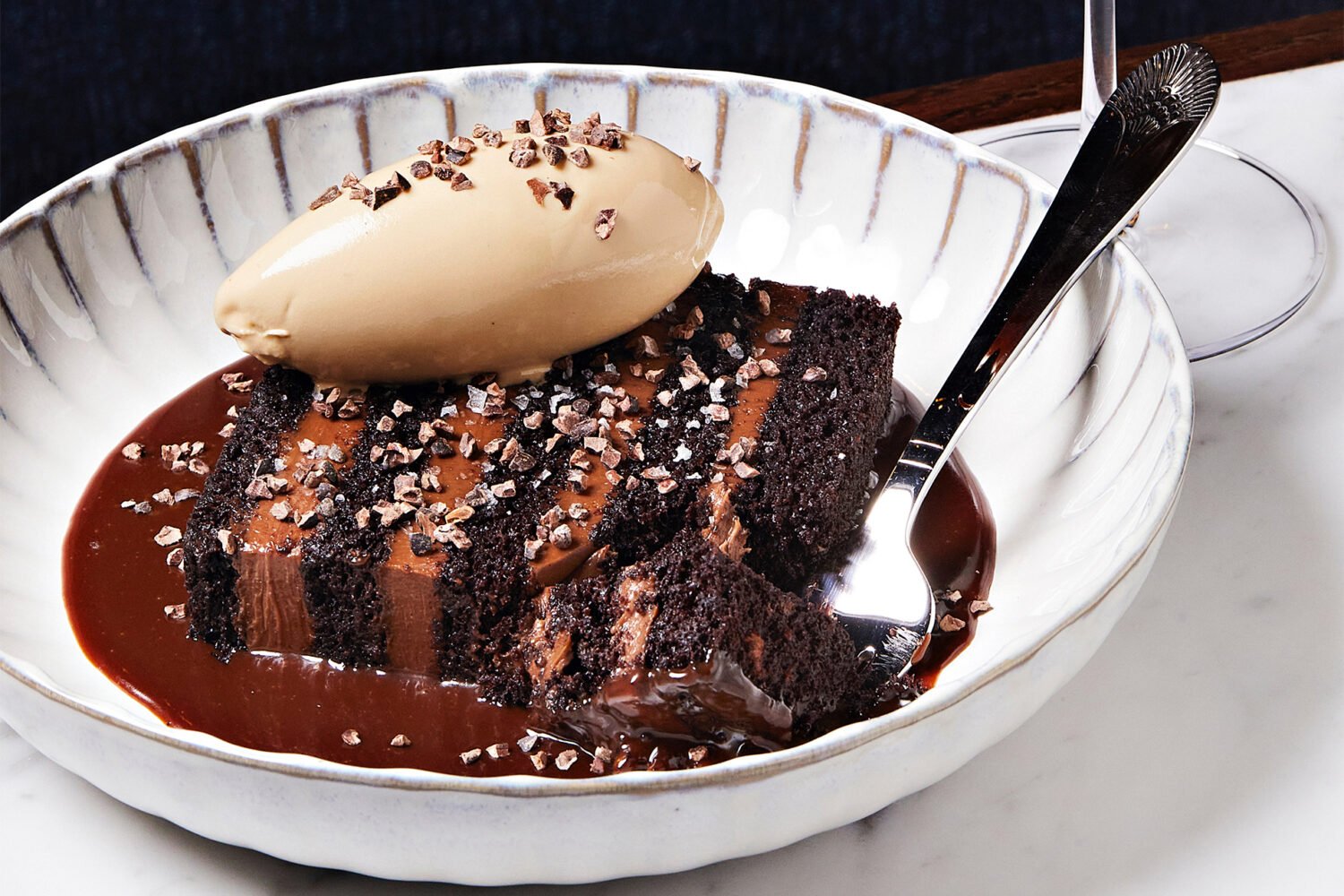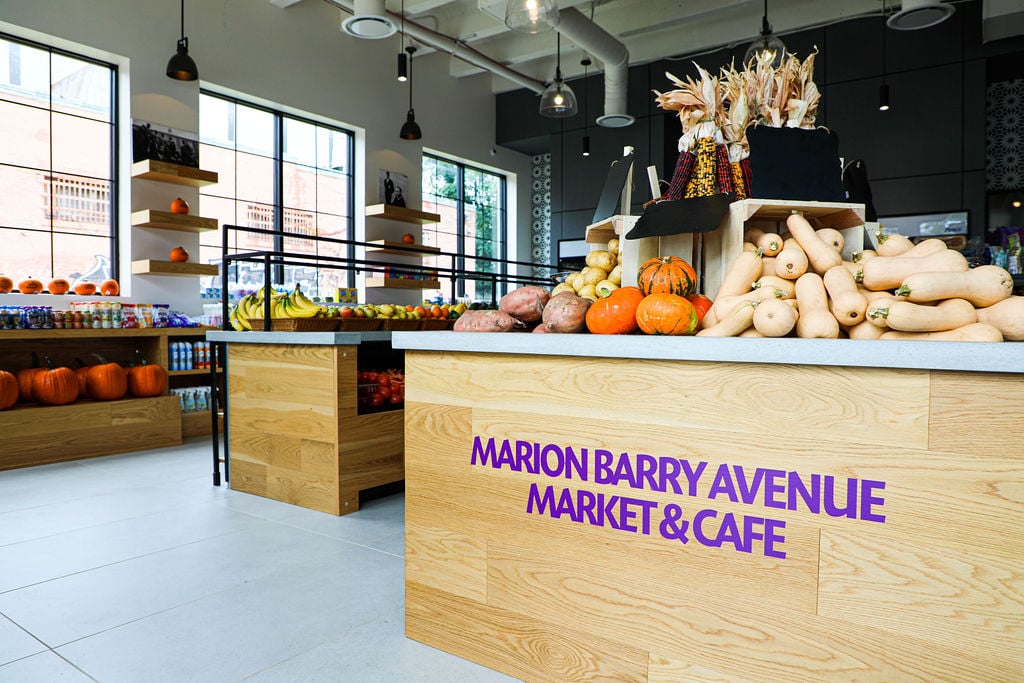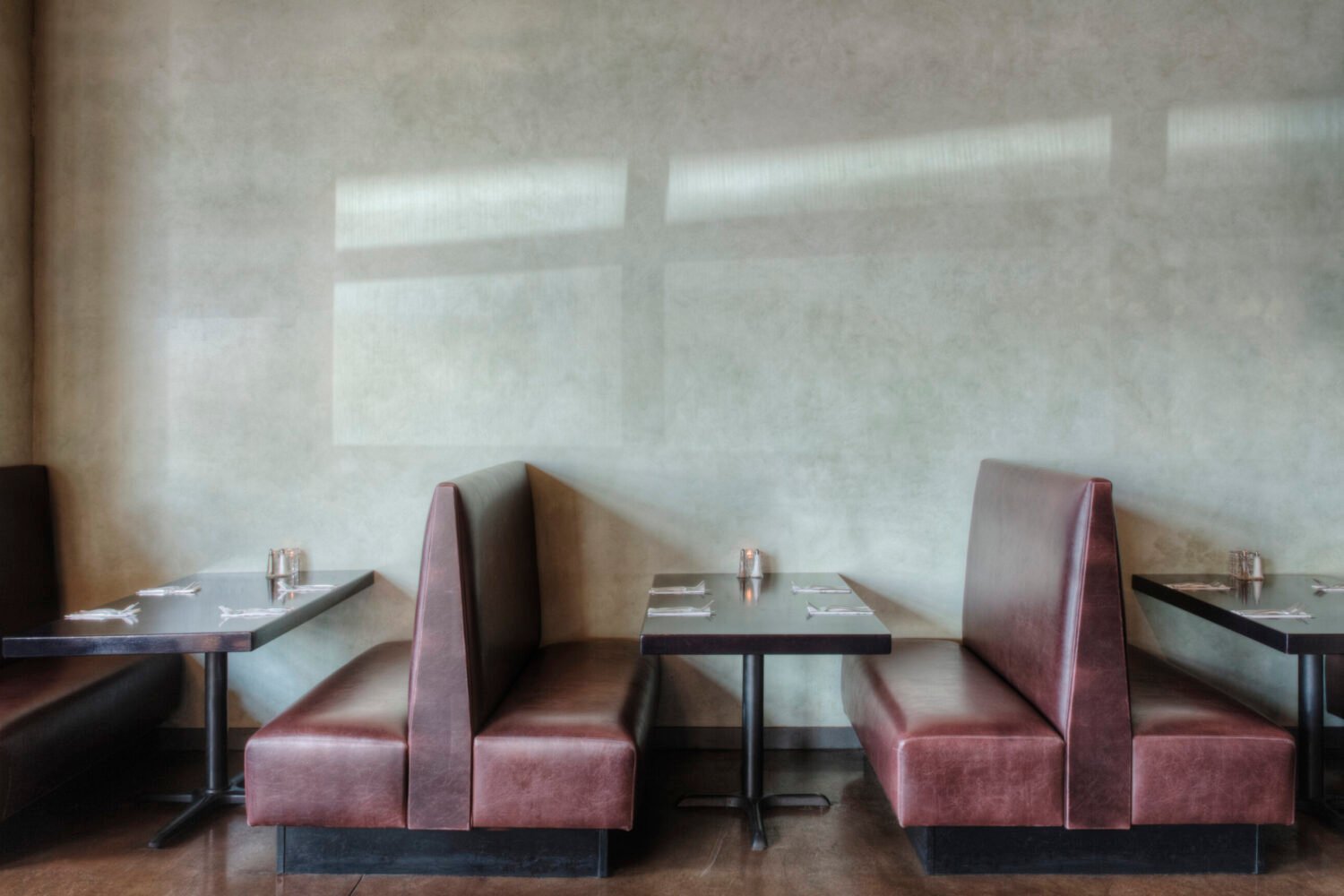Laap Pla Duk– catfish, shallots, and chiles. Photograph by Scott Suchman.
Slideshow: Little Serow
It was inevitable that Johnny Monis, the young chef who pilots Komi, Washington’s best restaurant, would eventually open a second place. The questions were when and what–questions that Monis, as idiosyncratic as he is brilliant, seemed in no hurry to answer. As Komi evolved from an ambitious bistro into the area’s most rewarding meal, Monis stood poised to elevate his stature nationally. But the chef has resisted the lure of advancing his celebrity.
His second act, Little Serow, turns out to be a 28-seat Thai restaurant in an English basement with no sign at its entrance. Festooned with hanging light bulbs and sporting a DIY-looking paint job the color of crème de menthe, the restaurant looks like the sort of project you see when an ambitious sous chef breaks free and starts his own place.
It feels like it, too. The young staffers, all onetime Komi employees, light up with smiles when you walk in–grateful, it seems, that you’ve discovered them. It may be the warmest welcome in town.
Monis got married in northern Thailand last year–his wife, Anne Marler, co-owns both Komi and the new venture–during a trip through the region, where he fell hard for the local cuisine. The cooking of the mountainous region is so little seen on the menus of America’s Thai restaurants that even among Thai-food fanatics it qualifies as a hidden treasure. Forgoing the lushness and sweetness that appeal to so many, it emphasizes brightness, pungency, and spice, which in some preparations seem to exist in a 1:1:1 ratio. If a Thanksgiving meal is a succoring hug in its bland neutrality, northern Thai cooking is a kick to the throat.
One of the wonders of Komi, where dinner ends with spit-roasted shared plates, is that it imposes on diners a communal sensibility. Little Serow couldn’t be more different in its aims, but it’s clear that Monis doesn’t merely want to feed us delicious things. In the Mediterranean manner–or in this case, the northern Thai manner–he wants us to slow down and linger. Dinner is seven dishes, served family style, for $45 (they change somewhat from week to week, and there are no substitutions), and the pacing is closer to that of a tasting table than of a neighborhood Thai joint.
The format would seem more suited to foie gras and rack of lamb than pork rinds (the standard first course) and larbs (the lime-drenched salads that are staples of Thai menus). But it allows Monis and his small brigade of cooks to lavish the same care and detail on dishes as they do next door–to produce a minced, fried catfish for a larb so light it’s like filigree, or pork rinds that are crunchier and ten times porkier than any store-bought brand.
The $45 price is more than twice what you’d expect to pay at most Thai restaurants–though about a third the cost of dining at Komi. But it affords Monis the buying power to procure the freshest meats and produce.
“Do I smell cucumber?” my mother wondered as she walked through the door one night. A basket with not just slices of cucumber but also Thai eggplant along with leaves of basil, cabbage, and several lettuces–had just been deposited on a nearby table.
The vegetables aren’t only accents; they’re utensils. The same goes for the basket of sticky rice, which is meant to be rolled into balls and used to scoop up salads and sauces and enfold the various meats that make up the latter half of the meal.
It’s nearly impossible to zip through dinner eating this way. The cooking demands that you take the time to explore and savor it–the interplay of textures, the subtleties that unfold after the initial wave of heat.
The biggest surprise about Little Serow, beyond the fact that Monis decided a northern Thai restaurant should be his vehicle for branching out, is how straightforward he is. The price tag and format led me to expect an “interpretation”–a stylized cuisine that aims to reassure diners that they’re settling into Western fine dining even as it bids to seduce them with exoticism. In that brand of fusion, proteins are identical to those of a bistro and sized much the same. Eastern flavors show up in the seasoning and sauces, which might look like a jusbut tingle with spice.
Monis doesn’t alter proportions, and he resists the lure to indulge in Western-style portioning. His “charred, hammered” beef would have made a great steak. Instead, he marinates it, slices it thin, and piles it in a heaping mound on the plate. In its crusty, salty exterior and tender lusciousness, it eats like good barbecue, especially after a swipe through the accompanying cup of tomato galangai nam phrik (ground by hand in a mortar and pestle, like all the pastes, or gaos). In other hands, the kaffir-lime-laced pork sausage might have provided a starting point for a more elaborate dish, but Monis opts for simplicity, creating a light, almost spongy texture and giving the sausage a casing that pops at the first bite.
Beer is the expected pairing with such bold and spicy food, and several good ones are on the menu. But Little Serow surprises here, too. Kathryn Bangs, the winsome sommelier at Komi, has curated a list that you won’t find at any other Thai restaurant–or any American bistro–including several infused fortified wines whose pleasing bitterness and floral aromas are excellent foils for Monis’s plates.
Intensely personal undertakings like this are often vanity projects that can be doomed by seriousness and self-congratulation. That Monis avoids self-indulgence is a testament to his devotion to the cuisine and to his considerable skills as a cook. His love of discovery is palpable. After seven courses over several hours, mine was, too.

